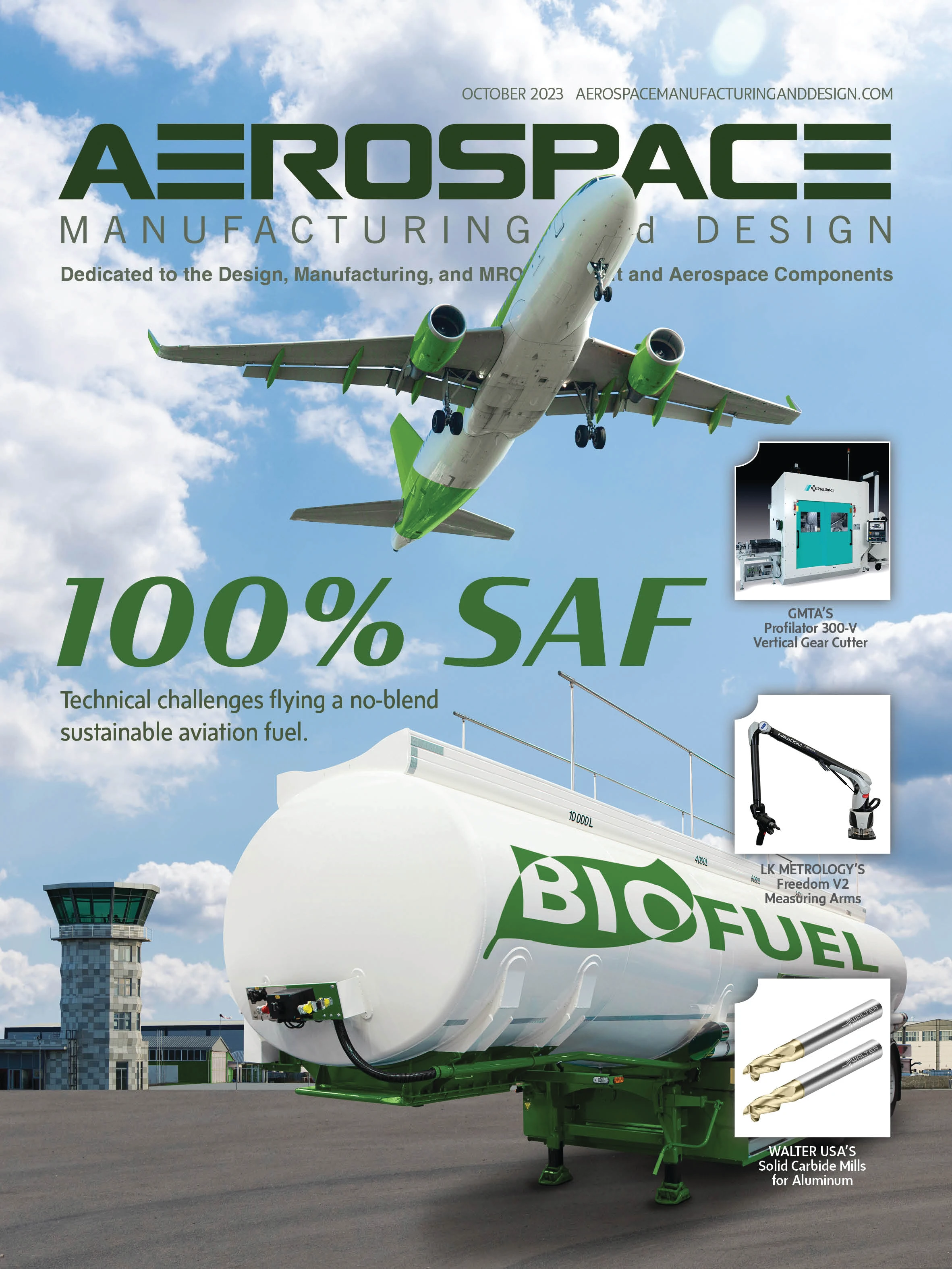
While digital transformation has been a top priority for many industries since the rise of cloud migration and artificial intelligence (AI), aerospace and defense (A&D) manufacturing’s monumental technologies and legacy systems have been slower to catch the wave. Digital transformation can be a top solution for the key priorities of the global aerospace industry. With increased scalability and reliability of technologies, AI-driven applications and other innovations stand poised to revolutionize aerospace manufacturing. From design and production to supply chain management and maintenance, they’re fundamentally reshaping aerospace manufacturing. The far-reaching advantages of digital transformation and AI in enhancing operational efficiency, ensuring quality control, optimizing costs, and fostering innovation can’t be overemphasized. It’s crucial for decision-makers to be prepared for the profound impacts ahead.
The future of AI-driven manufacturing
AI and machine learning (ML) propel more efficient and innovative aerospace products and decision-making with aircraft design optimization, predictive maintenance, and quality control.
In design optimization, AI algorithms can analyze vast amounts of data to enhance aerodynamics, reduce weight, and improve fuel efficiency. Integrated with digital twin technology, organizations can conduct simulations or real-time monitoring that improve design speed, accuracy, and costs, in addition to manufacturing and maintenance.
For predictive maintenance, sensors can continuously monitor critical systems and components, generating vast amounts of data about vital aspects such as force, pressure, temperature, or vibration. AI algorithms can analyze this data in real time, detecting anomalies and predicting potential failures. Commitment to proactive maintenance optimizes products and processes, minimizes downtime, reduces maintenance costs, and enhances safety, all improving regulatory compliance.
In supply chain management, digital technologies enable real-time tracking of parts and components, optimizing inventory levels, and improving supplier collaboration, ensuring smoother and more efficient manufacturing processes. Advanced supply chain analytics tools can evaluate data from diverse sources to offer valuable insights, including demand forecasts, supplier performance, and transportation logistics, to anticipate demand fluctuations and optimize inventory levels. Manufacturers are also implementing blockchain technology to create a decentralized and transparent supply chain network to enable better traceability, reduce the risk of counterfeits, and enhance trust between supply chain stakeholders.
Many manufacturers have used the power of AI and automated technologies to reap significant rewards. It’s estimated 25% of the share of work in the aerospace industry has been automated in the past two years, however, further investment will be critical to drive future innovations. For example, Airbus, which was awarded $150 million by the Aerospace Technology Institute for Wing of Tomorrow for aerospace research, has employed AI to optimize aircraft wing designs, resulting in improved fuel efficiency and reduced drag. Its new Wing Technology Development Centre (WTDC) facility uses cutting-edge digital tools and automation to invest in people, technology, industrial systems, supply chains, and digital and physical capabilities for next-generation aircraft.
Rolls-Royce’s predictive maintenance system, which uses AI and sensors to anticipate engine faults, is another example of proactive maintenance scheduling to minimize operational disruptions. Boeing leverages AI-powered vision systems to enhance quality control by identifying minute defects in components during production and recently signed with Shield AI to explore strategic collaboration of autonomous capabilities and AI on current and future defense programs. Digital twin technology coupled with AI analytics allows GE Aerospace to monitor aircraft engines in real time, foreseeing performance deviations and optimizing engine efficiency.
Tackling digital transformation
Adopting new technology without a clear, committed action plan will diminish results, allocate resources poorly, and risk security or safety. The C-suite can foster a culture of innovation, collaboration, and digital readiness by communicating a clear digital transformation vision and documented plan. Bringing this plan to fruition throughout the organization requires consistent communication from top to bottom and across. Executives who embrace digital technologies and processes can readily lead by example and encourage collaboration and cross-functional teamwork to ensure all departments are aligned.
Organizations that commit to tracking, analyzing, and acting on valuable internal data have a competitive edge in maximizing the benefits of AI and allied technologies. Industry 4.0’s innovations improve production execution, quality control, and overall equipment effectiveness (OEE). Committing to manufacturing execution systems (MES) transforms inventory, production, and quality control activities to deliver efficient and compliant work execution by digitally tracking and documenting the end-to-end manufacturing process. MES acts as a central nervous system by connecting people, machines, and data, enabling manufacturers to achieve efficient and compliant work execution while digitally tracking and documenting the end-to-end manufacturing process and integrating technologies.

Any digital transformation must scale integrated technologies and processes in tandem with each other and regulations. This requires a bird’s eye view of the organization’s digital ecosystem and outside forces such as compliance, competition, or societal expectations. Potential risks concerning data security and privacy, workforce displacement due to automation, and ethical considerations of AI should also be considered. Addressing these challenges requires robust cybersecurity measures, workforce upskilling, and responsible AI governance.
Digital transformation is ongoing
While many have deemed this time of heightened cloud migration and AI-driven technologies as a “wave of digital transformation,” this is only the beginning. The future of A&D involves heightened digital transformation efforts making it more prevalent and expected. AI will continue to play a pivotal role in aircraft design optimization, predictive maintenance, and quality control, leading to more efficient and innovative aerospace products. Digital twin technology will gain further traction, enabling real-time monitoring and simulation for better decision-making. The Internet of Things (IoT) will connect various components within aircraft, providing valuable data for maintenance and performance optimization. Augmented reality (AR) and virtual reality (VR) will find broader applications in employee training, maintenance tasks, and design reviews. With tools such as natural language processing (NLP) and generative AI, it will become even easier for organizations to adapt and integrate AI into their day-to-day operations.
In the future, quantum computing holds the potential to revolutionize aerospace simulations and optimization, solving complex problems at unprecedented speeds. Sustainable, energy-efficient manufacturing will be a top priority as the impacts of digital transformation are more clearly measured.
Incremental changes for transformation
Without a total commitment to change and evolution throughout the organization, technology alone can accomplish only so much. Transformation means fully integrating the positive impacts of technology with the overall organizational vision, systems, company culture, leadership decisions, and employee and customer experiences. Organizations fostering a culture of innovation and collaboration, investing in skilled talent, and committing to tracking, analyzing, and acting on valuable data can successfully tackle digital transformation. From there, embracing constant growth and evolution will be key to staying competitive and thriving in a dynamic aerospace manufacturing landscape.

Explore the October 2023 Issue
Check out more from this issue and find your next story to read.
Latest from Aerospace Manufacturing and Design
- Hartzell electric engine propeller earns FAA approval for AAM
- Thin profile flame and thermal barrier
- Guill Labs offer materials and extrusion testing
- High production vertical honing systems
- July Manufacturing Lunch + Learn webinar with OPEN MIND Technologies
- July Manufacturing Lunch + Learn webinar with Techman Robot
- Hexcel and NIAR expand collaboration
- Open aperture XY alignment stage





